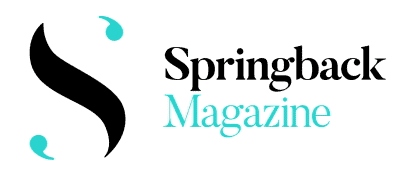Springback Academy 2017
Review

Your Mother at My Door
Timothy and the Things
It feels so good jumping into the last rhythms of an ingratiating music without any particular reason! Or waiting for the next big moment with open arms! What if you suddenly find yourself with an outsider’s viewpoint? If you notice that your partner has the same kind of madness that you have? Look around: a lot of serious people are sitting here with furrowed brows, watching somebody wriggling and nobody’s calling the doctor?!
Emese Cuhorka and László Fülöp mix these two attitudes with highly professional dance skills in such a playful way, which mercilessly points up the irony of the situation but doesn’t hurt anybody – they make fun of themselves in the first place. The performers ignore all the rules: they can do this because they are so familiar with every layer of the body’s power of expression. This performance is the manifestation of artistic freedom.
Your Mother at My Door by Timothy and the Things (aka László Fülöp and Emese Cuhorka) feels like an unfinished symphony. Not only because of the romantic orchestral music surging through the piece, swollen with restless, unresolved tonalities, but also because it looks incomplete. The title and programme notes bear no relation to the piece, and the performance itself has a stop-start, seams-showing style. Between an electric piano and a computer keyboard, the duo generate a sonic environment of fulsome melodrama that is obstinately at odds with the jerky physicality of their flat-footed swizzles and try-out posturing. There are bumpy mismatches, archly artificial poses, some happenstance synchronised swimming, gestures of eyebrow-raised irony. It’s sort of funny, kind of interesting, but whether or not its rebuttal of coherence is an intention as well as an effect, I think its raw appeal would work better cooked.
At a certain point while watching Your Mother at My Door, taking notes became superfluous: my notebook simply reads, “never ending movement genius”.
László Fülöp and Emese Cuhorka dance with cartoonish urgency, as if animated by a mischievous collagist. More machine-gun-fire than flow, Cuhorka and Fülöp’s gyrations are prolifically inventive: gnomish stalking is interrupted by grands battements; balletic prancing sprouts weird, nervous gestures and tumbles ungracefully into a heap.
An extended unison floor phrase seems inspired by synchronised swimming, albeit in a pool drained by some practical joker. Why pretend to melt seamlessly into the ground when the body stubbornly insists on its bony solidity?
I suspect that Your Mother is on some level an ironic riposte to those who insist dance needs to be ‘about something’. Here, separation of form and content is impossible. Cuhorka and Fülöp test the limits of the dancing body, and make us laugh while doing so.

